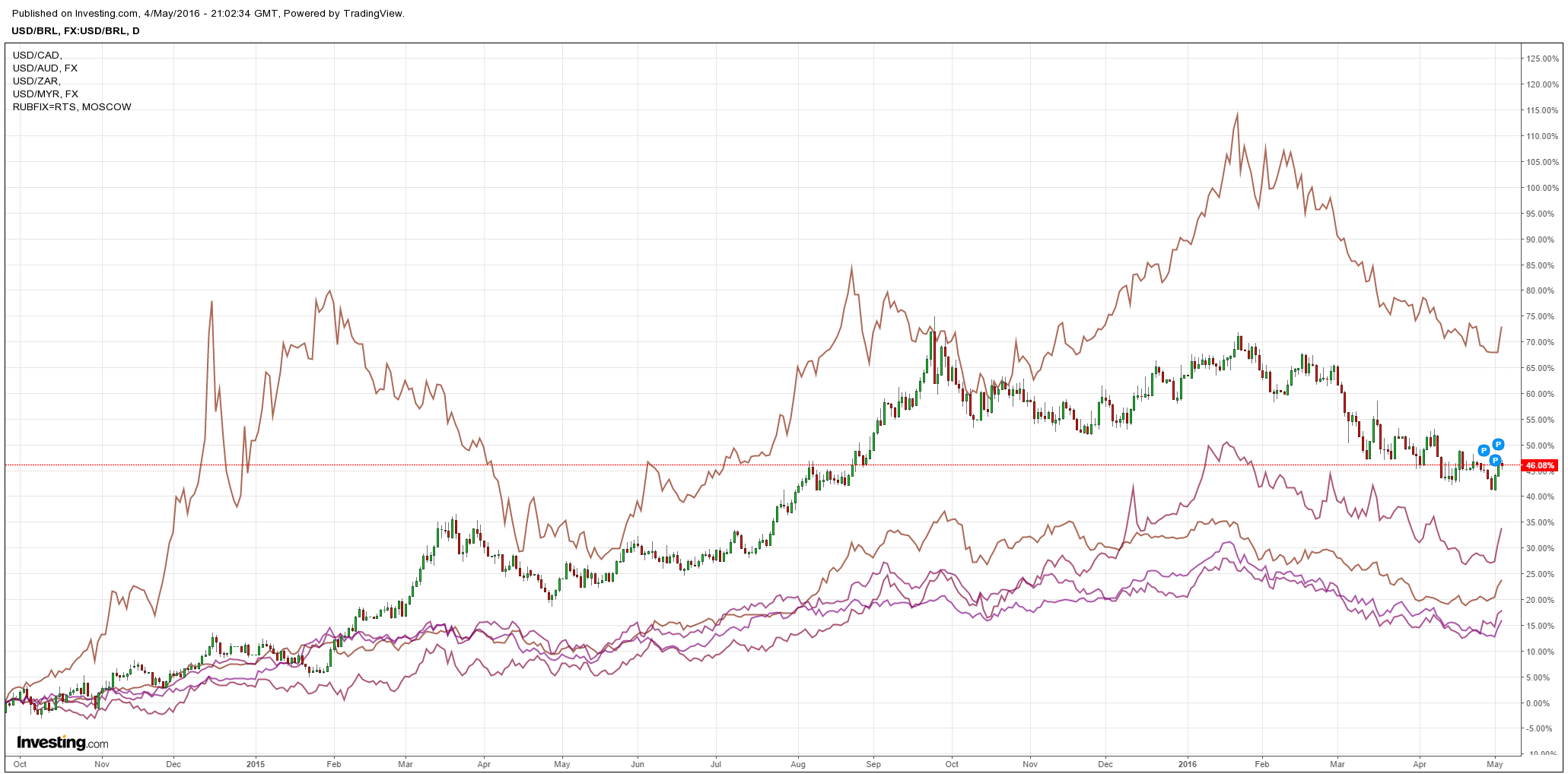The US dollar continues its Lazarus performance:
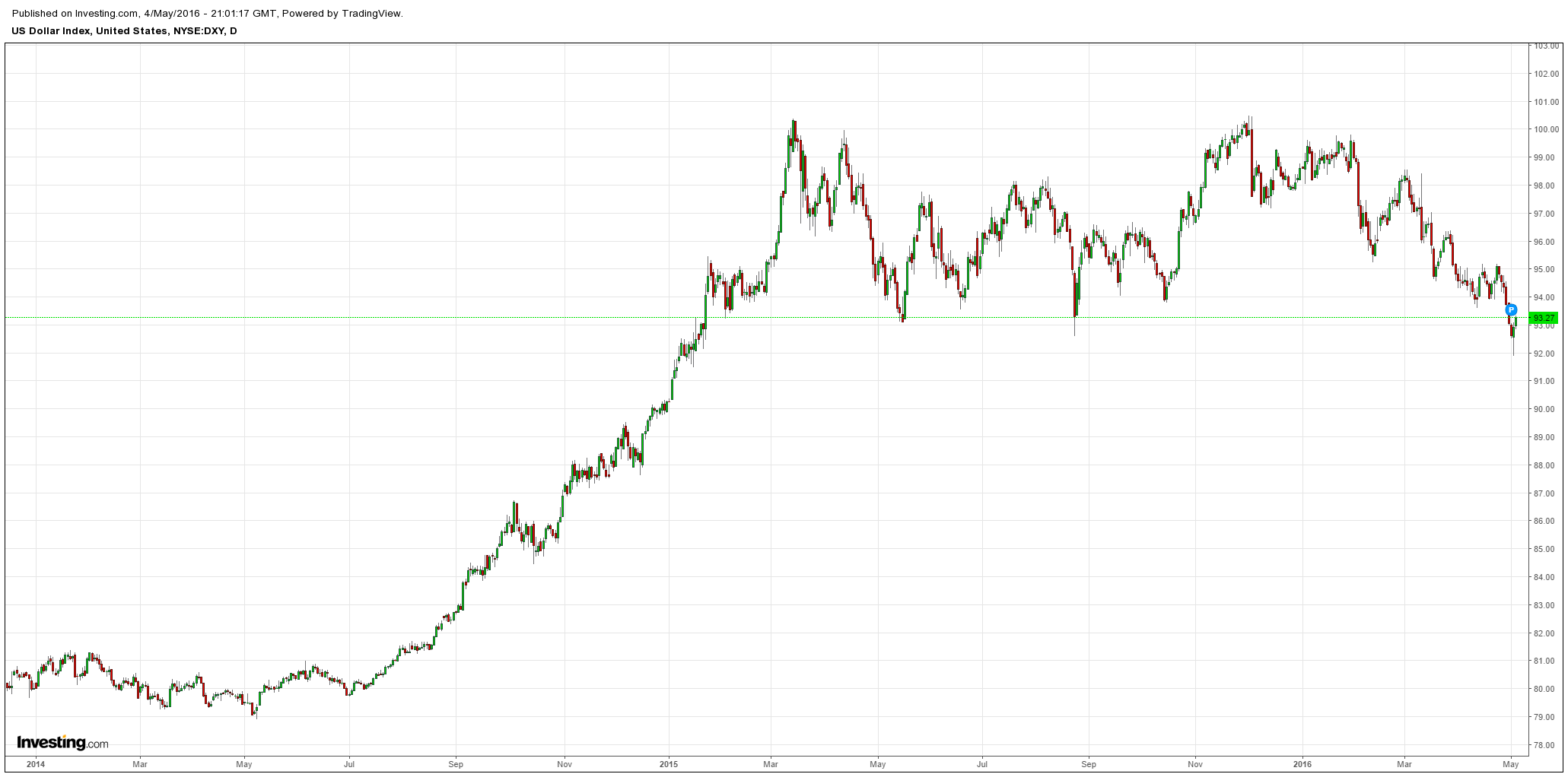
Euro and yen saw relief:
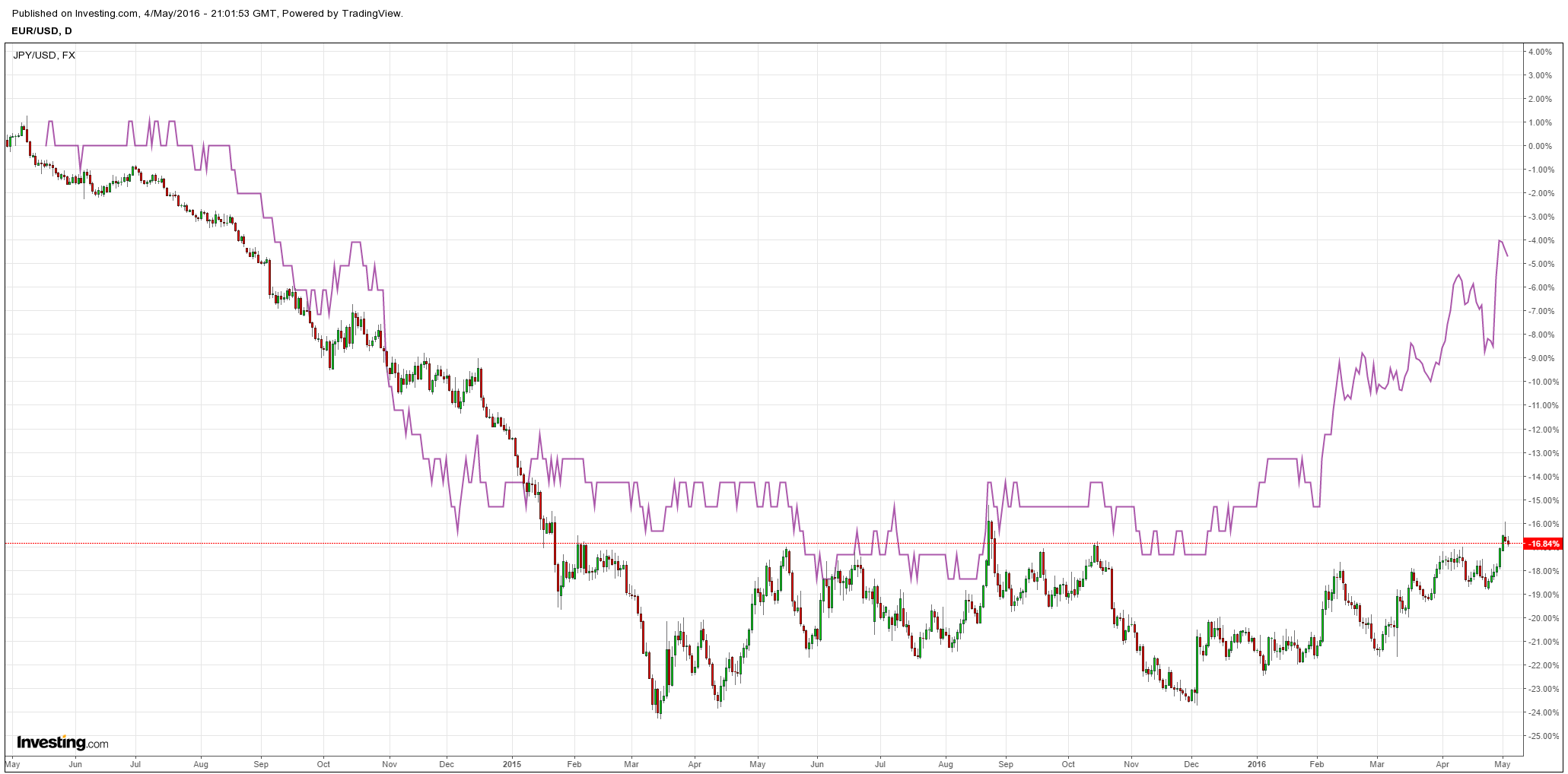 Commodity currencies were monstered:
Commodity currencies were monstered: Gold eased back:
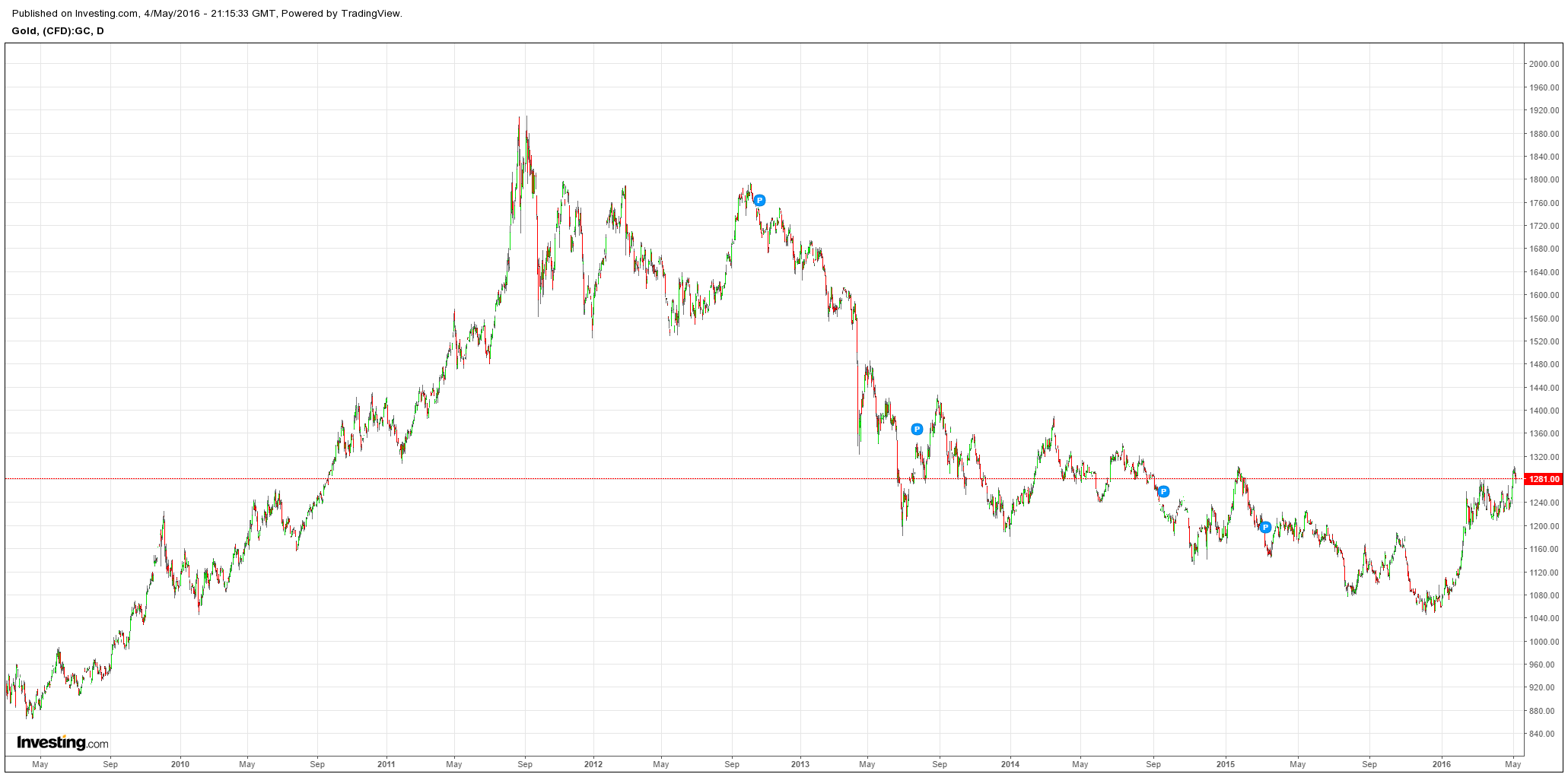
Brent too:
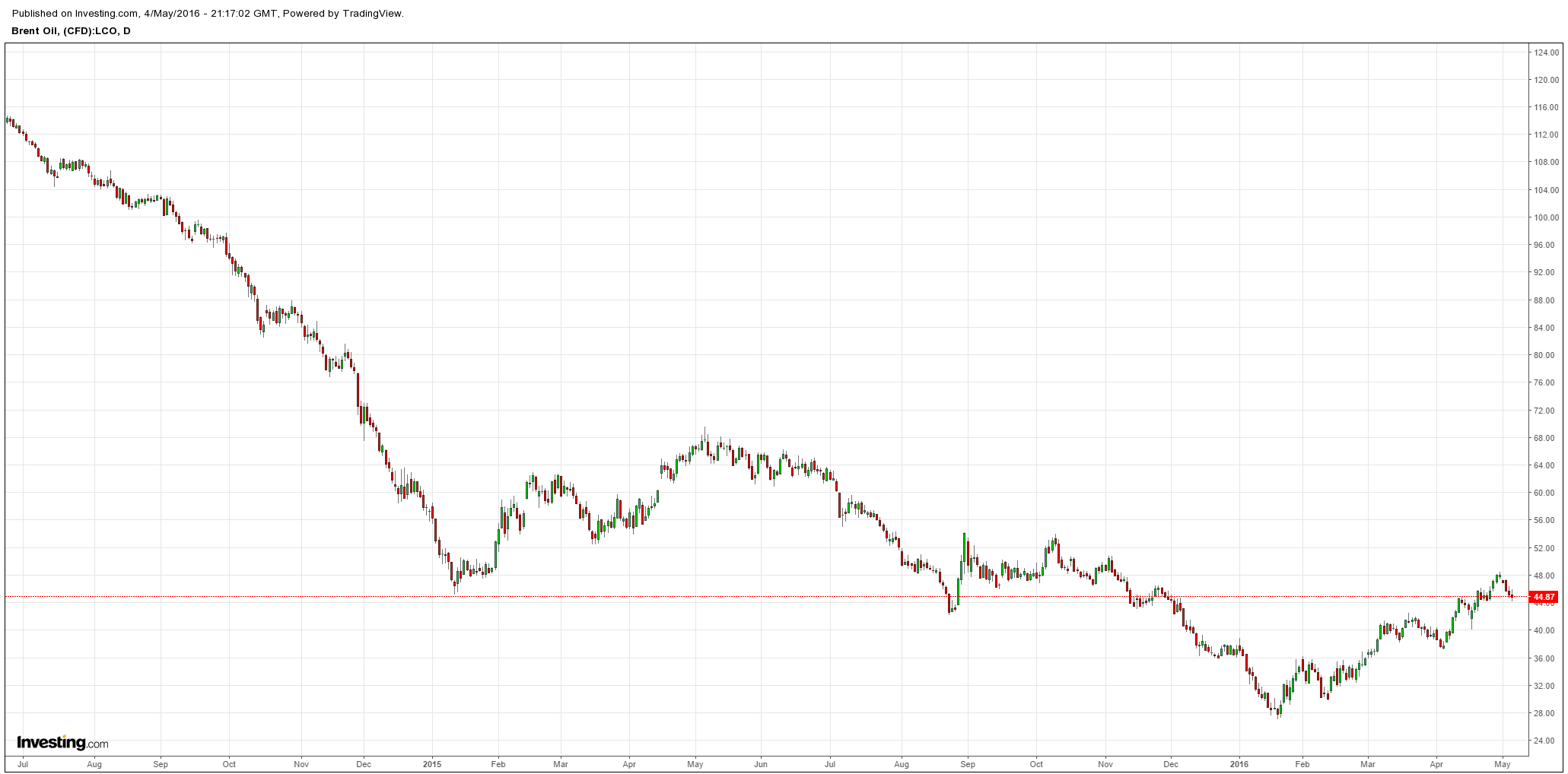
And base metals:
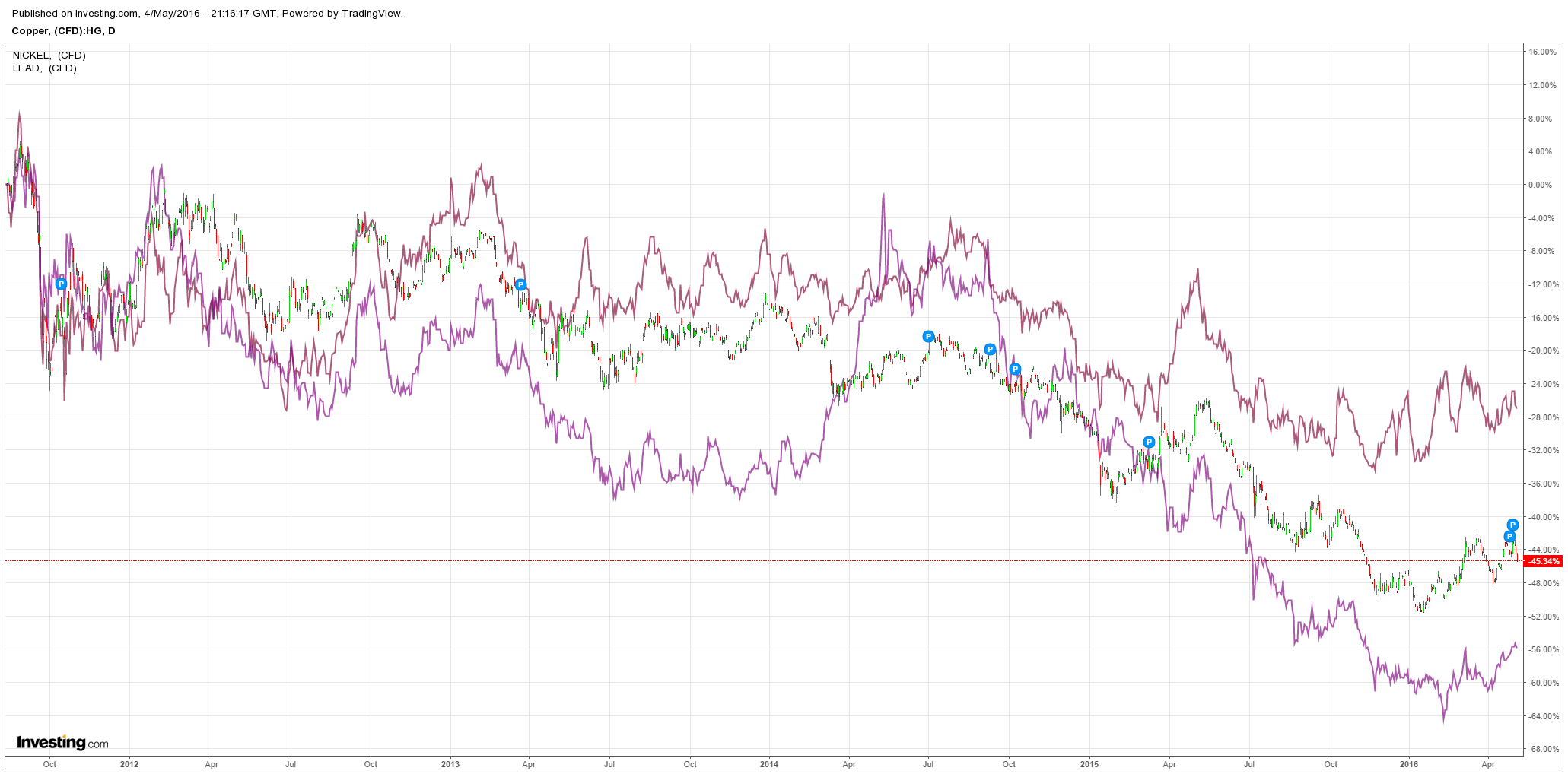
Miners were thumped again:
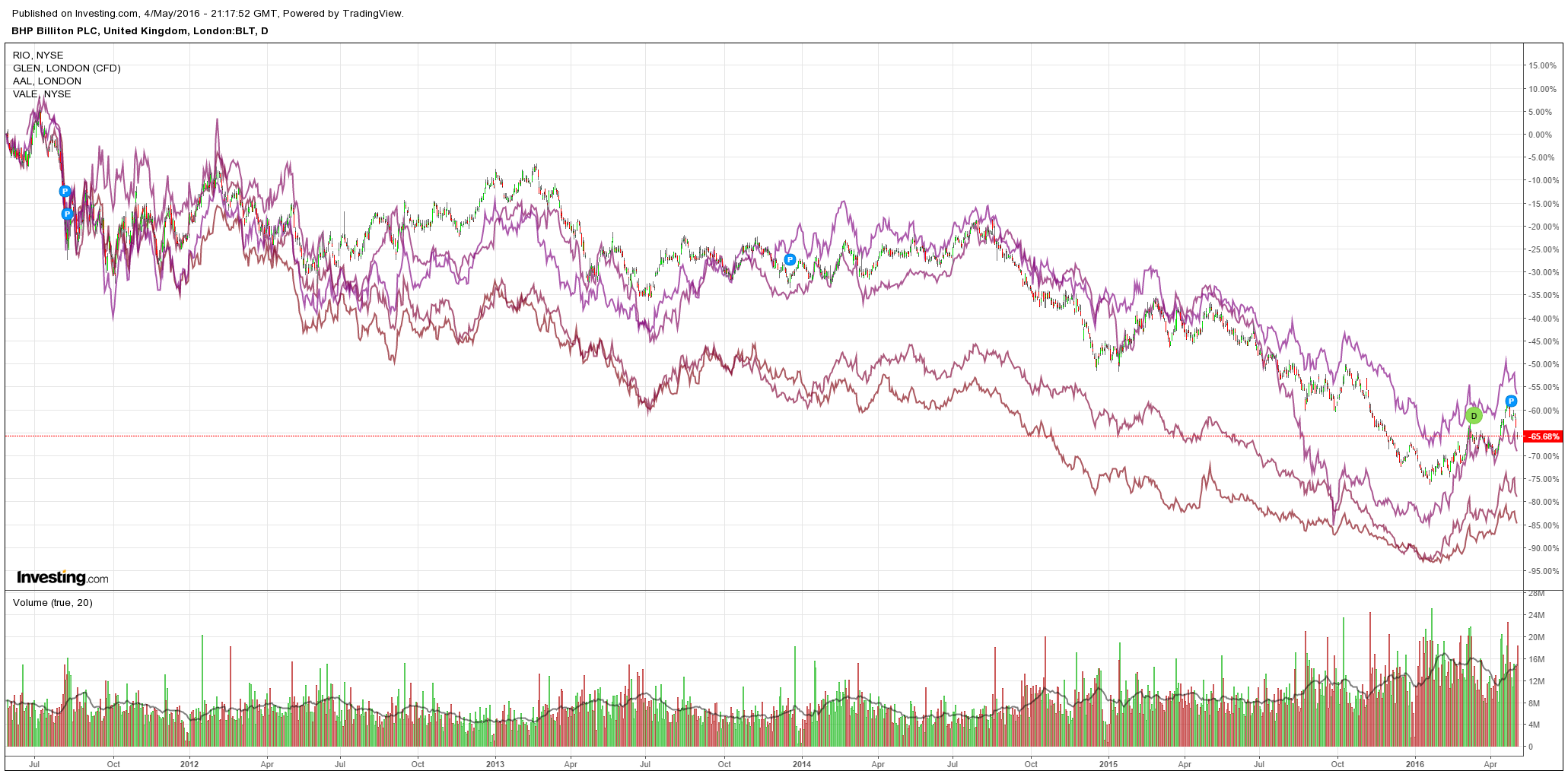
US and EM high yield fell:
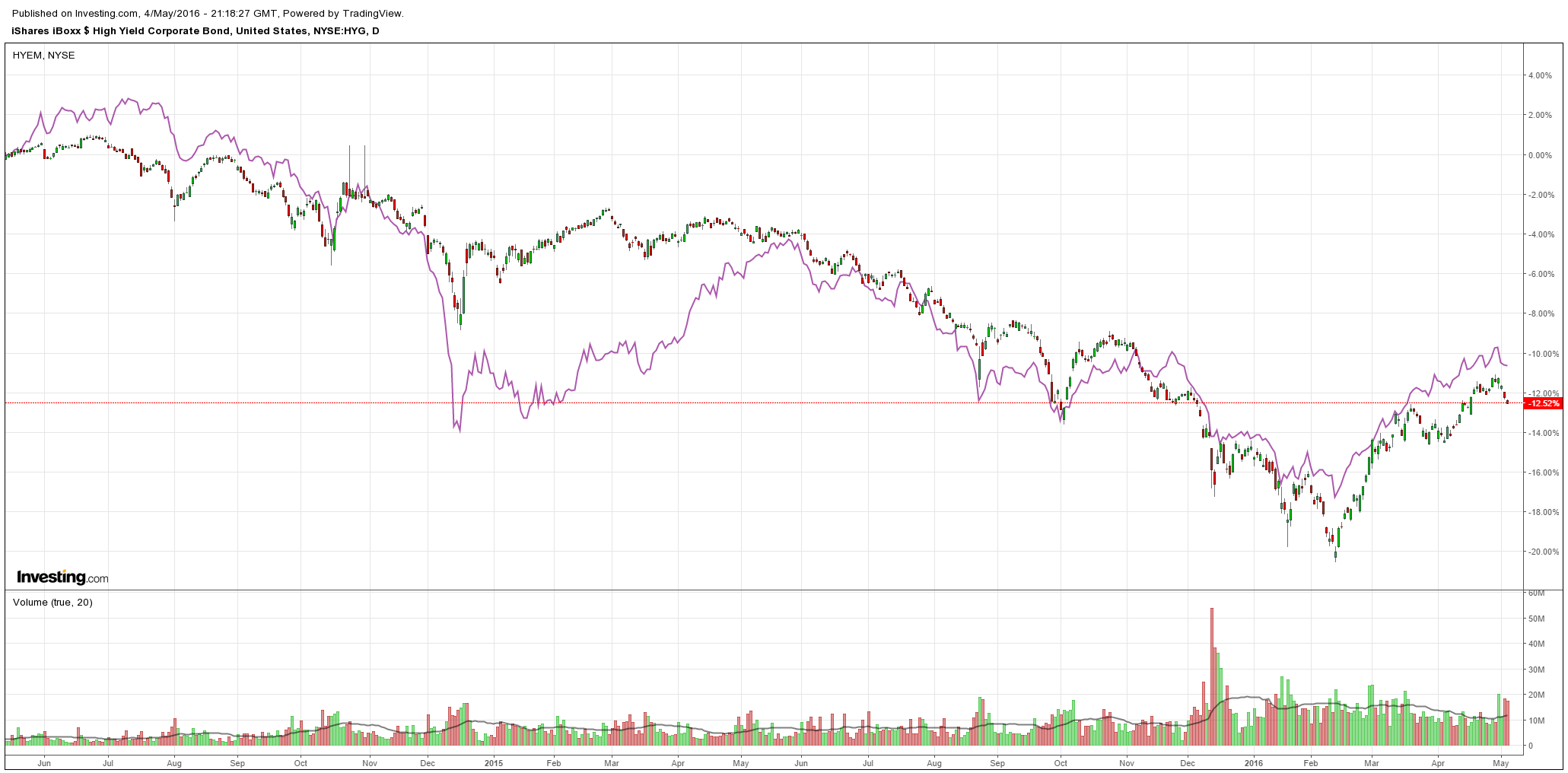
This looks driven largely by fading froth around the Chinese stimulus. Whether the US dollar selling is done I’m not so sure. Citi sees the entire Mining GFC set-up as unaltered:
In particular, none of the structural headwinds that seem to have plagued the global economy in recent years (a mix of excessive indebtedness, deteriorating demographics, rising political uncertainty as well as the end of the China growth miracle and the commodity supercycle) have been resolved.
- The Chinese stabilization could be even more short-lived than we currently expect. As noted above, the duration of China’s old-style investment-led fiscal stimulus and credit binge may prove rather short, as Chinese policymakers pivot back and forth between supporting growth and supporting reform and rebalancing. In the light of the evident imbalances and excesses in the Chinese economy, the Chinese stimulus may also prove to be less effective in sustaining aggregate demand – even in the short run – than hoped for.
- One contributor to the potential stabilization in China’s and EM activity has been the weaker US dollar and receding expectations of a US rate hike. But these may well prove temporary. In particular, financial markets probably currently underprice the risk of Fed rate hikes over the next year or two (our US team currently expects one more hike in 2016, probably in September, but the next hike could also happen in June or, more likely, July). It remains to be seen whether EM financial conditions and the tentative stabilization in EM economic activity would prove resilient to renewed Fed tightening and dollar strength.
- A US downturn could threaten. The recent weakness in the US data, continued cautious behavior of US consumers, and the lack of “animal spirits” to raise investment spending leave questions as to whether there may be further economic weakness to come.
- Political risks in Europe are high and rising. The UK’s upcoming EU referendum (June 23) remains a key uncertainty for the coming months and we believe Brexit, if it happens, would be a major negative in economic and political terms for the UK and EU as a whole. We still put the probability that the UK votes to leave the EU at 30-40% – i.e. not our base case but by no means a trivial risk – but there are some reasons to think that the risk may be even higher. And Brexit is by no means the only source of political uncertainty and risk in Europe, with new elections due in Spain, high support for non-mainstream parties in many countries including Austria, France, Italy, the Netherlands, Sweden, Denmark, Hungary, Poland and Slovakia, and rising non-mainstream support even in Germany.
The recent IMF-World Bank Spring Meetings made clear that the perceived reduction in global recession risk was greeted with a major sigh of relief from policymakers around the world. This is in at least part because it may not be straightforward to come up with an appropriate policy response in the event of a major downturn. Of course, there are still various options for stimulus in most economies. On the monetary side, the ECB highlighted that a pivot towards more domestically-oriented easing (including credit easing implemented through purchases of corporate bonds and subsidized (negative interest rate) loans to banks) is possible; the BoJ has shown that purchases of equity ETFs and REITs are among the tools of policymakers; and for both the BoJ and ECB, there is probably some more room to lower policy rates (including offering (more) negative interest rates on loans to banks) and to increase purchases of public assets. Yet it is almost universally acknowledged that the incremental boost to demand from monetary stimulus is diminishing and the side-effects (including political side-effects) may be rising.
If monetary options are limited, the obvious alternatives would be stronger fiscal or quasi-fiscal support or, indeed, the much-heralded ‘three-pronged strategy’ of combining monetary and fiscal stimulus with structural reforms. But even though, at least in the advanced economies, fiscal policy is slowly and gradually turning less procyclical and more supportive of economic activity, hurdles (legal, ideological, political or reflecting (lack of) fiscal space) to timely and sizable fiscal stimulus remain relatively high in most economies. Meanwhile, prospects of structural reform remain rather limited across both DMs and EMs. The limited likelihood of effective policy stimulus in the event of a downturn therefore adds to the potential fragility of the recent more positive developments in financial markets and real activity, if sentiment (business, consumer or financial market) were to turn more pessimistic again and /or if one or more of the adverse contingencies listed above were to materialize.
The Mining GFC lives!

